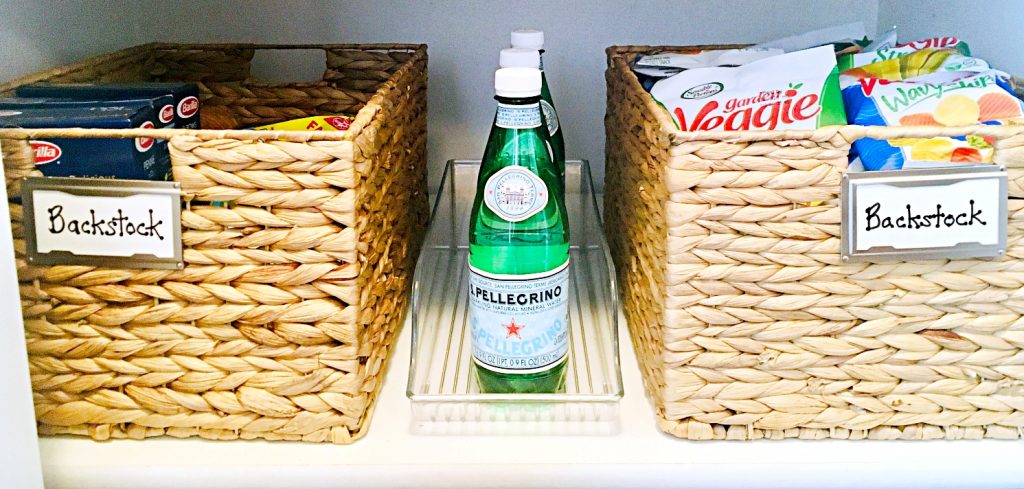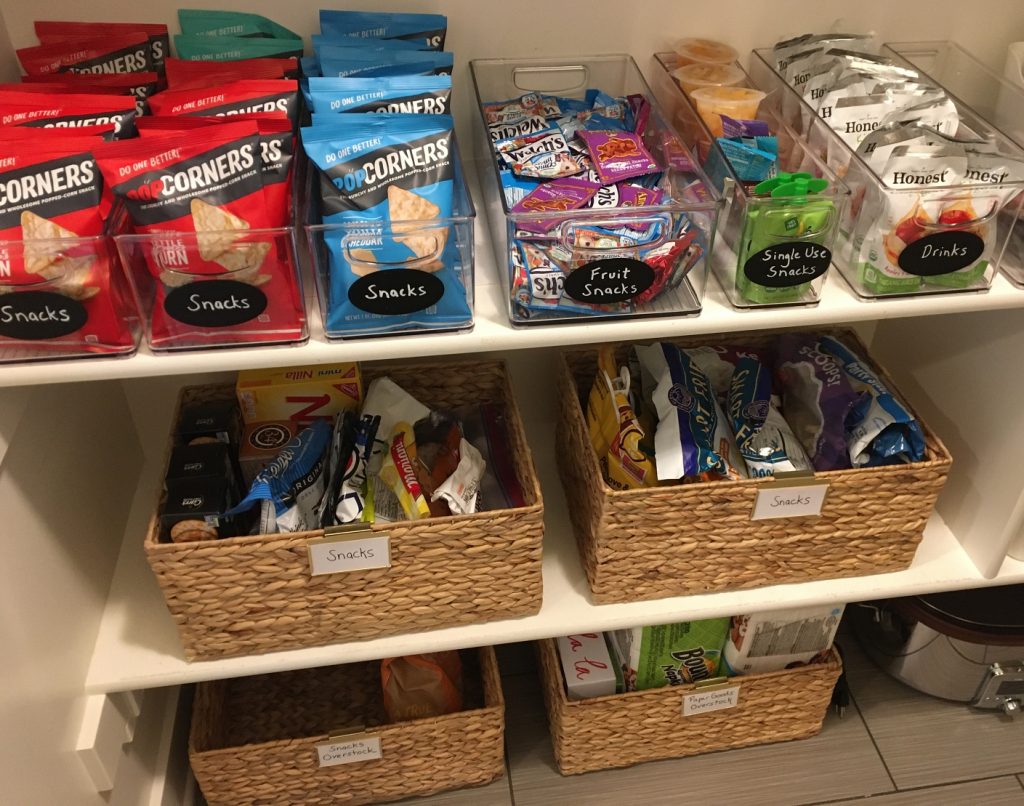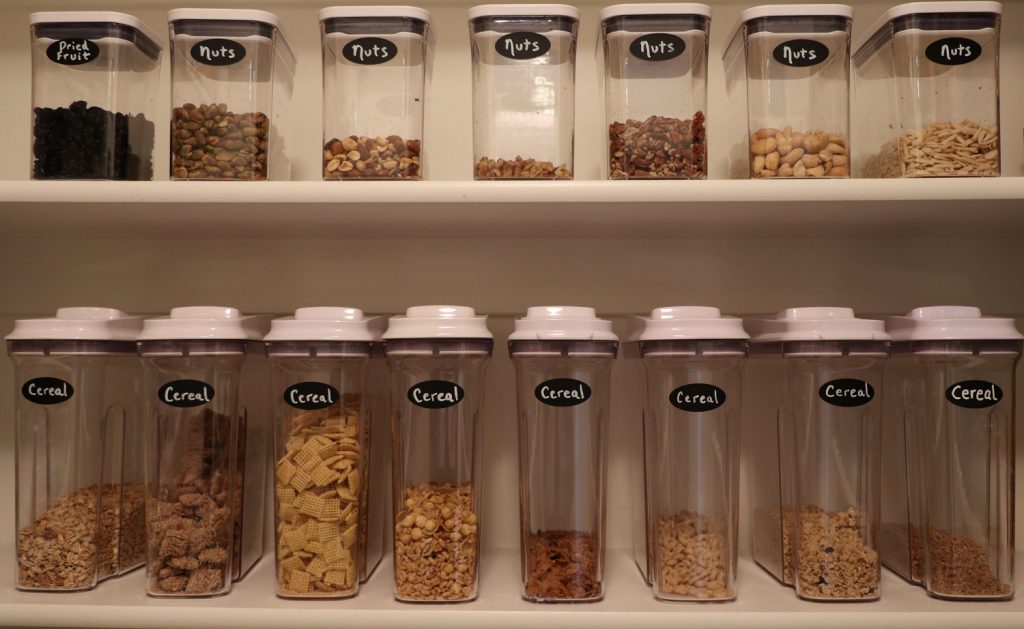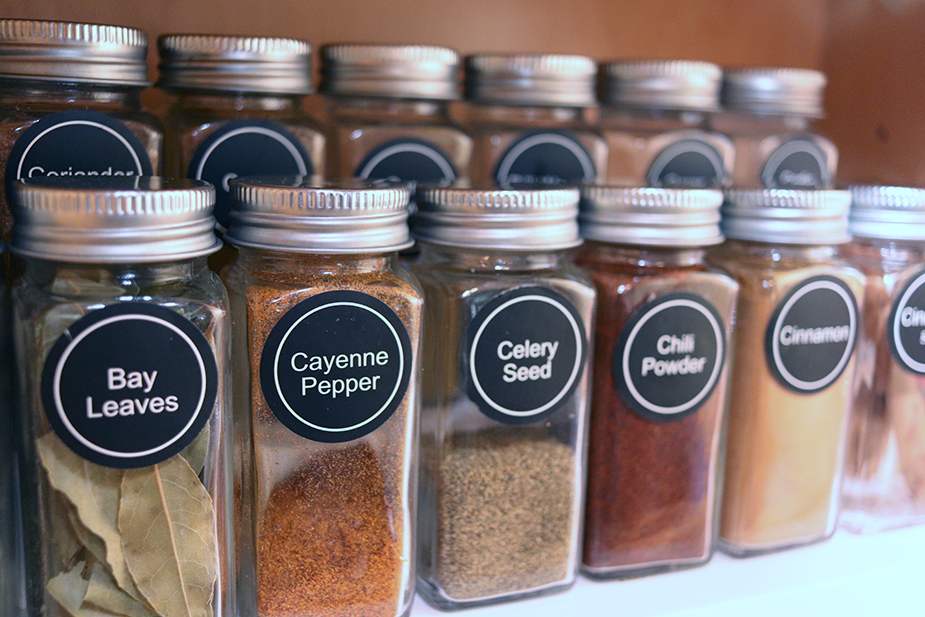*Disclosure: All links included in this post are amazon affiliate links. This means that, at no additional cost to you, I will earn a small commission if you click through and make a purchase.
Decanting….it’s not just for wine. But, what is it? And, what does it have to do with organizing? Decanting is something I often do for clients, and have done extensively in my home. This post has all the decanting basics, as well as answers to the questions you never knew you had!
FAQs:
1. What is decanting?
The process of transferring something from one container to another. In the context of the kitchen, it’s transferring food (let’s say flour) from the original bag into a more permanent and sturdy container. When we get rid of original packaging we free up space in our cupboards and pantries. More on the benefits to follow.
2. Should I decant?
It depends. It comes down to personal preference, and whether you’ll be committed to maintaining it and transferring packages after every grocery haul. I find a lot of value in decanting, and the pros heavily outweigh the cons in my book. But, I’m not here to tell you what to do – only to present information and perspective so you can do what works best for you.
And, this isn’t all or nothing! You can decant certain items and not others. My recommendations are in question 7 below.
Pros:
- Less messy (no dusty flour bags or cumbersome cereal bags)
- Keeps food fresher longer/air tight
- Food is visible so you know when you’re running low
- Save $ in long run (know what you have/won’t buy duplicates)
- Fits spaces well (often modular/stackable)
- Uniform look
- Frees up space
Cons:
- Putting groceries away takes longer
- Up front container purchase can be costly
3. How do I know what size containers to buy?
Fortunately, brands such as OXO provide guidelines for what containers work well for commonly decanted foods, so you can purchase exactly what you need. See below image. Guides for their other sizes are on their site.



4. What is a backstock bin?
A backstock bin is a large container (I like a basket on the floor) that contains excess/bulk items, used to replenish your main stash of food. If you decant a bag of crackers into a container and it overflows, toss the partial bag of crackers into your backstock bin until there’s room for it in the main container. Or, if you purchase 6 boxes of pasta, decant one, and keep the other 5 in backstock until needed.
It’s a way to manage inventory so you know what you have and what you need. How do you know what to put on the grocery list? First, check the container where you decant your items. If it’s empty, check the backstock bin to see if you have replenishment there. If not, the item goes on the grocery list. It’s easy, and keeps your main food areas clutter free!
In the second image below, you’ll see the snack backstock bin on the floor, directly under the main snack bin…all the components of a great organizational system!






5. What containers should I use?
OXO Pop containers are my favorite, Pricey, but worth it. 
![]()
Mason Jars work well, too:
I love these for spices. They also come in a pack of 36. 
![]()
There are lots of great options. Look for something clear so you can see what you have, and airtight to maximize shelf life.



6. How do I know the use instructions or expiration date if the original package gets discarded?
I stick these adhesive business card holders onto the backs of containers. Cut out the pertinent instructions, slide in the sleeve, and you’re good to go. I do this with pasta, quinoa and rice, primarily. 
![]()
As far as expiration dates, we use up food pretty quickly, so it’s not an issue. But, if you want to log the date, write it on the container with a paint pen. 
![]()
7. Any tips on getting started?
Yes! Start with just a couple categories of food to see how you like it. I recommend starting with cereal, baking staples, or spices. Snacks and other categories can come later, if you find you’re liking the decanting process and experiencing some benefits. Give it a try!



